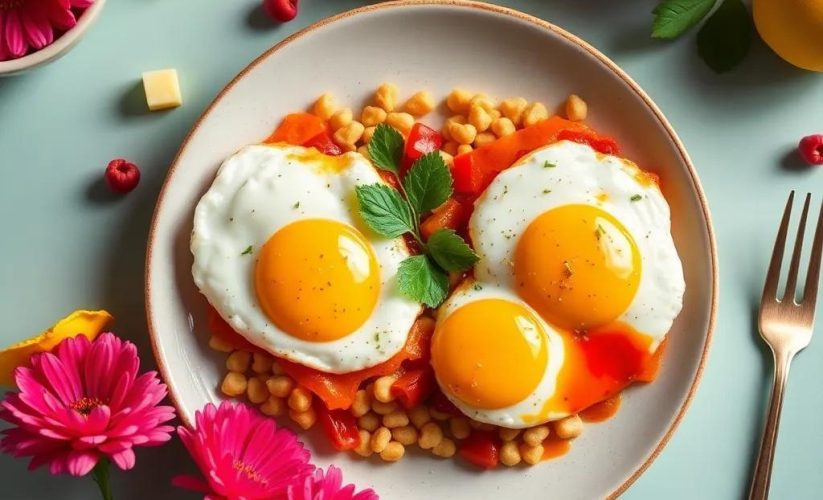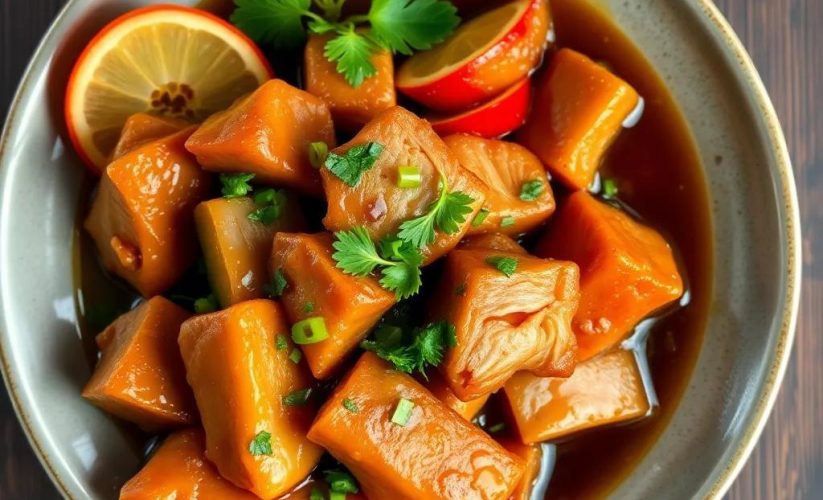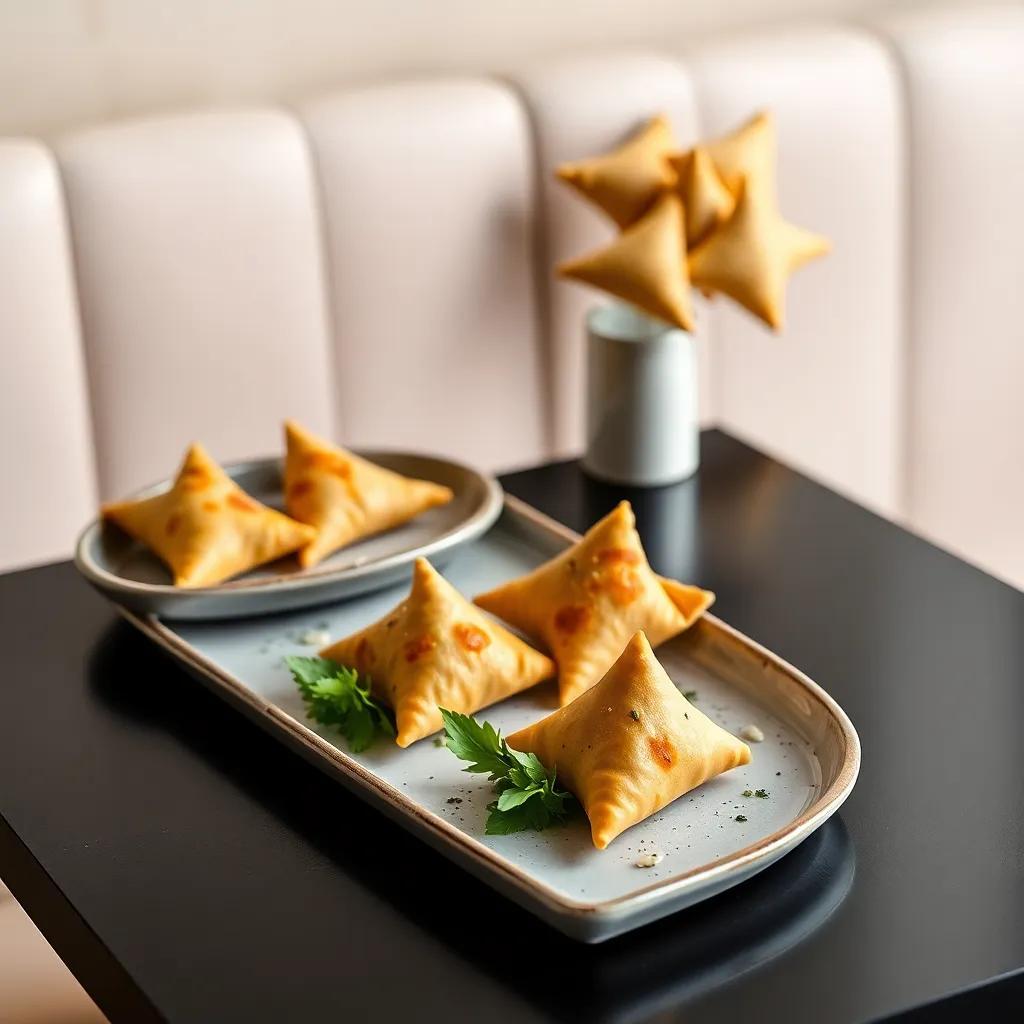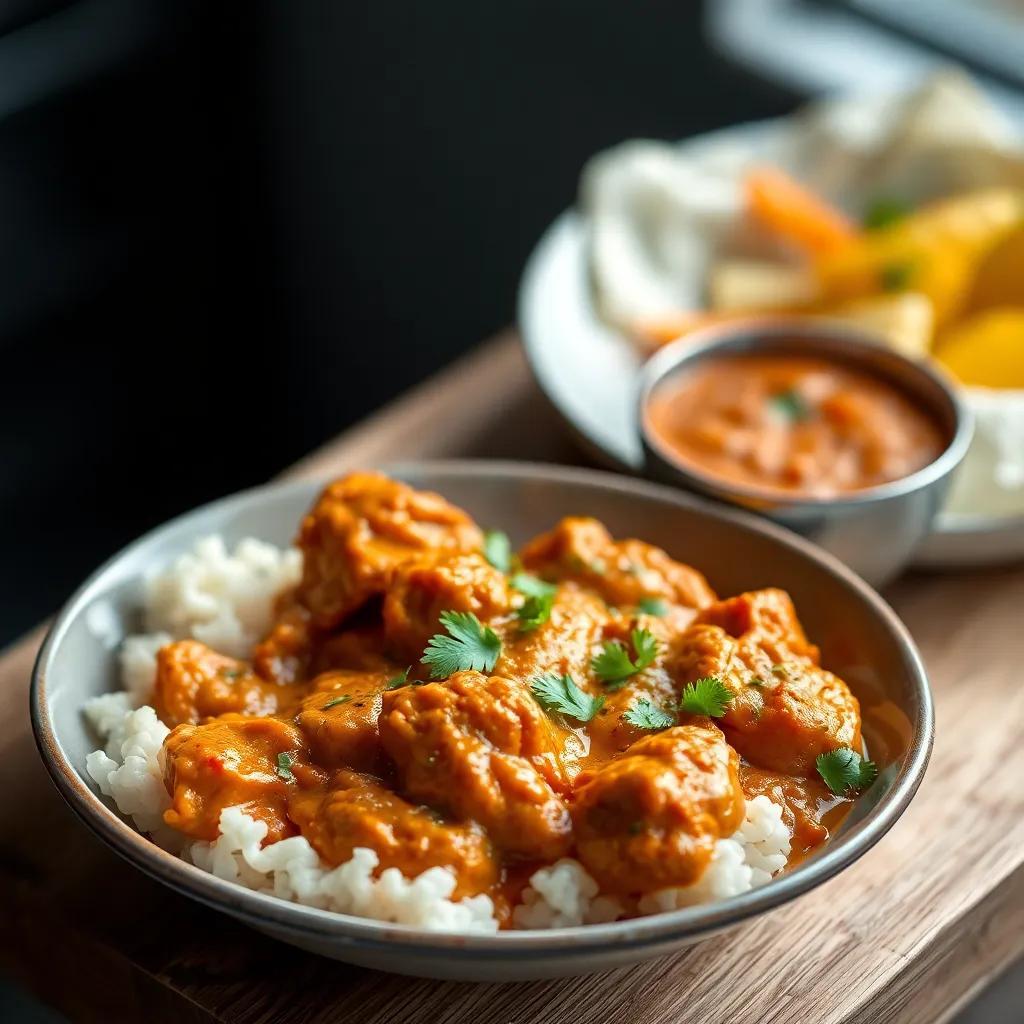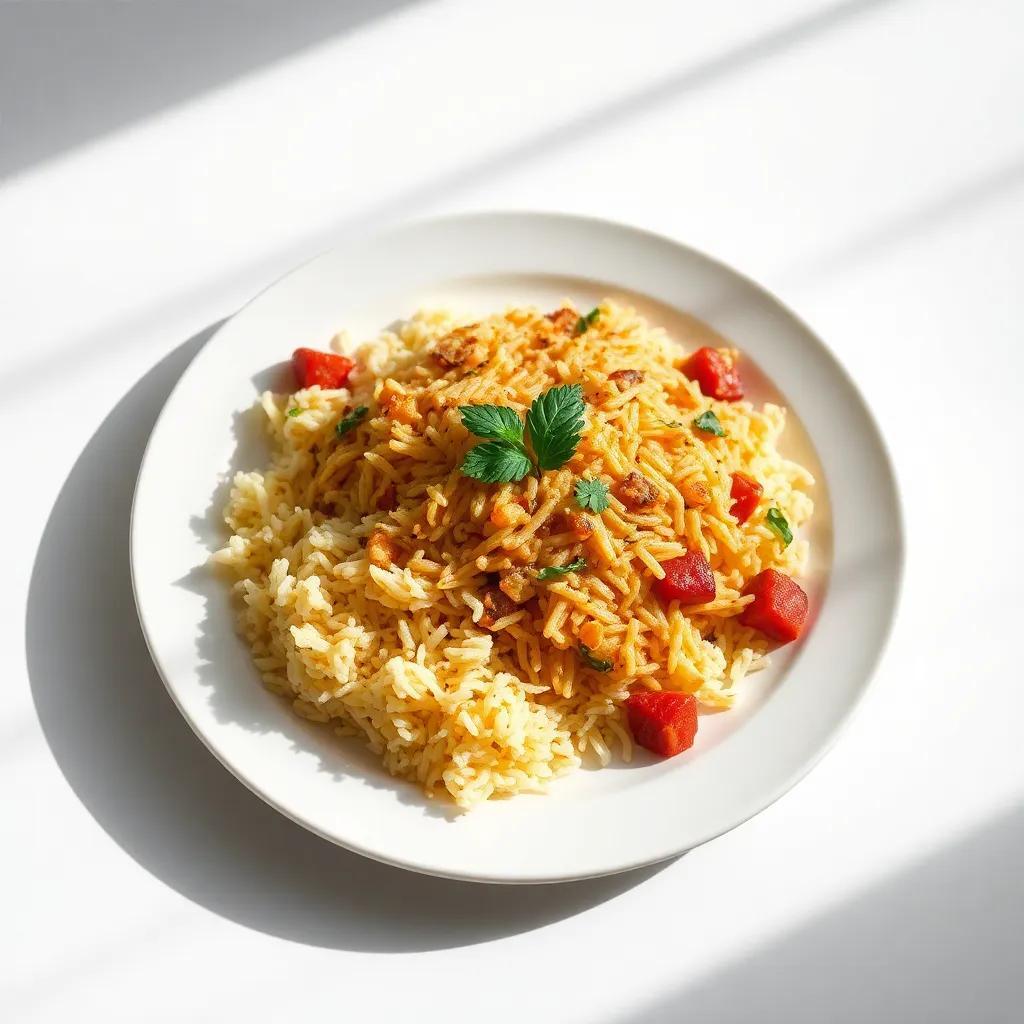Unlock the Secret to Easy, Vegan Masoor Dal: Flavorful & Fast!
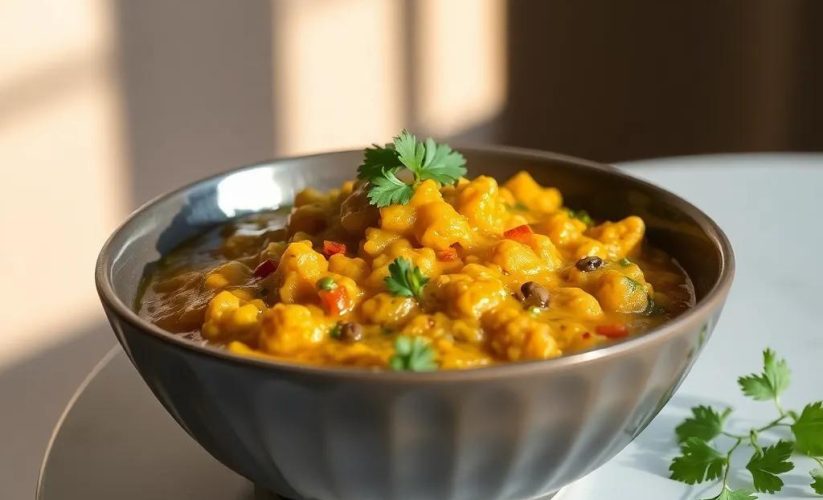
Unlock the Secret to Easy, Vegan Masoor Dal: Flavorful & Fast!
🌍 Cuisine: Indian
⚙️ Difficulty: Easy
Ingredients
Nutrition Facts
250
Instructions
- Rinse the red masoor dal under cold running water until the water runs clear. Set aside.
- Heat oil in a medium pot or deep skillet over medium heat. Add mustard seeds; once they start to pop, add cumin seeds and sauté for 30 seconds.
- Add the finely chopped onion and cook until translucent, about 5 minutes.
- Stir in the minced garlic, grated ginger, and chopped green chili (if using). Sauté for 1–2 minutes until fragrant.
- Add the chopped tomato and cook until softened, about 3 minutes.
- Mix in turmeric powder and salt; cook for another minute to blend flavors.
- Add the rinsed masoor dal and water to the pot. Stir well and bring to a boil.
- Reduce heat to a simmer, cover, and cook for 20–25 minutes, stirring occasionally, until the lentils are soft and cooked through.
- If desired, mash some lentils gently with the back of a spoon for a creamier texture.
- Optional: Stir in garam masala and lemon juice for added depth and brightness.
- Adjust seasoning with salt if needed.
- Garnish with fresh chopped cilantro before serving.
- Serve hot with rice, flatbread, or your favorite vegan side dishes.
Serving Suggestions
- Serve masoor dal over steamed basmati rice for a comforting meal.
- Enjoy with warm vegan naan or chapati to scoop up the dal.
- Add a side of sautéed spinach or kale for extra greens.
- Top with a dollop of vegan yogurt or coconut cream for creaminess.
- Pair with a fresh cucumber and tomato salad with lemon dressing.
- Sprinkle toasted cumin seeds on top for added aroma and crunch.
- Enjoy alongside roasted vegetables or a simple carrot pickle.
Table of Contents

Intro
Discover a comforting and vibrant dish that fits effortlessly into any busy weeknight or relaxed weekend meal: this easy vegan Masoor Dal blends simplicity with delightful flavors in a way that brings warmth to your table without demanding hours in the kitchen. Perfect for those exploring plant-based cooking or anyone craving a wholesome, protein-rich dish, this recipe transforms humble ingredients into something truly special.
Whether you’re serving it as the star of a cozy family dinner or as a nourishing accompaniment to an array of Indian-inspired sides, this Masoor Dal promises a satisfying experience that appeals to both beginners and seasoned home cooks alike. Its quick preparation and forgiving method mean you’ll spend less time fussing and more time enjoying—a true secret weapon for anyone wanting to eat well with minimal stress.
Ideal for pairing with steamed rice, flatbreads, or fresh salads, this dal adapts beautifully to different occasions, from casual lunches to festive gatherings. The subtle interplay of spices adds layers of flavor that evolve even further when made in larger batches, making it excellent for meal prep or sharing with friends. Embrace a dish that’s as nourishing as it is approachable—ready to become a fast favorite in your recipe collection.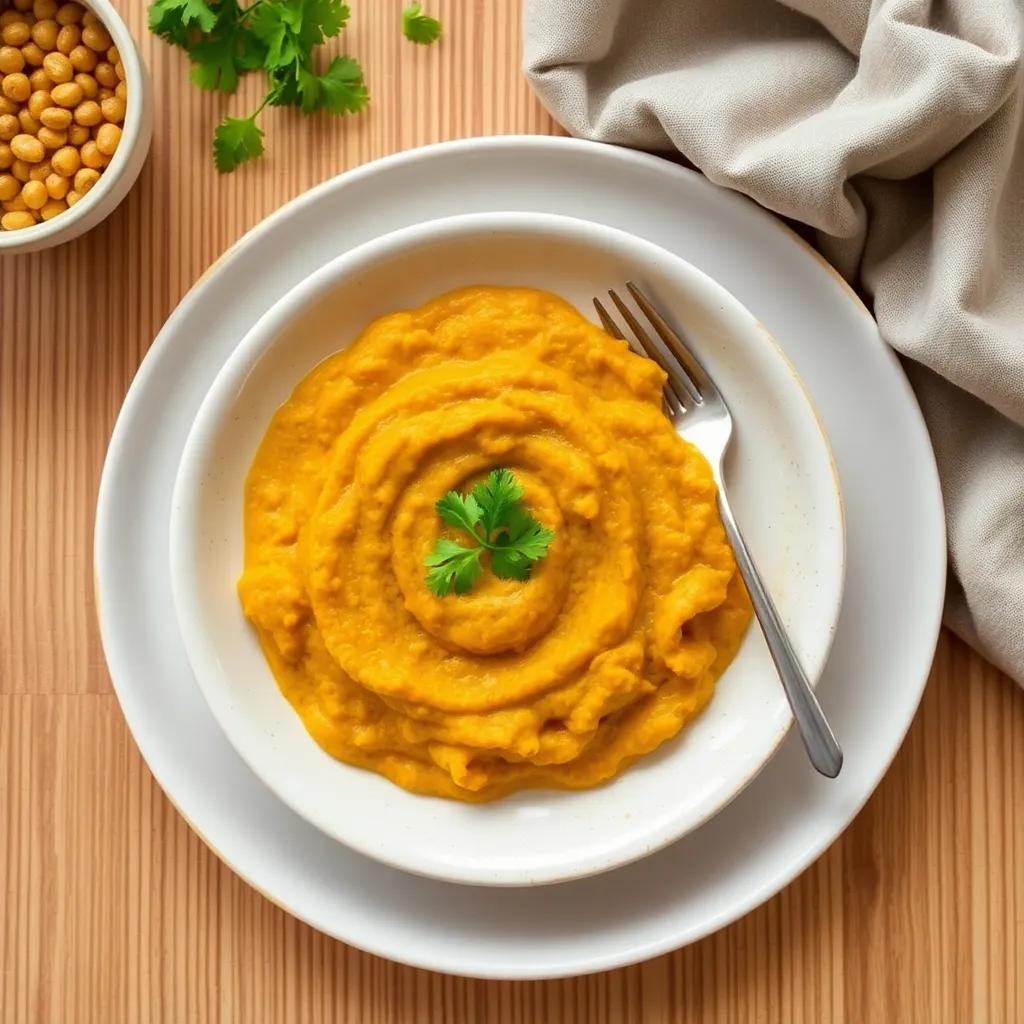
Ingredient Notes
When it comes to crafting a flavorful and fast Masoor Dal, a handful of key ingredients truly make all the difference—not just in taste, but in bringing that authentic, home-cooked charm to your bowl. Here’s a closer look at some of the standouts and why they matter:
Red Masoor Dal (Red Lentils)
These vibrant, rust-colored lentils are the heart and soul of the dish. Unlike other lentils, red masoor dal cooks quickly and breaks down beautifully, lending a naturally creamy texture without needing long soaking or complicated steps. When shopping, look for lentils that are bright red and free from debris—avoid those that are dull or pale, as they may be older and less flavorful. If you can’t find red masoor dal, split yellow lentils (moong dal) can be a decent substitute, though cooking times and texture will vary slightly.
Cumin Seeds
These tiny aromatic seeds add an earthy, warm note that’s essential for the traditional tempering (tadka) process. When heated in oil, cumin seeds release a nutty aroma that forms the base of many Indian dishes, including this dal. For the best results, buy whole cumin seeds rather than pre-ground powder—whole seeds stay fresher longer and offer a brighter flavor once toasted. If cumin isn’t available, coriander seeds lightly crushed can work in a pinch, though the taste will shift subtly.
Mustard Seeds
Often overlooked outside of Indian cooking, mustard seeds provide a delightful pop and slightly pungent bitterness when they sputter in hot oil. This initial crackle is a hallmark of authentic dal preparation, contributing both texture and flavor complexity. Brown or black mustard seeds are preferred for more intensity; however, yellow mustard seeds can be used for a milder result. If you don’t have mustard seeds on hand, a small pinch of mustard powder added later doesn’t replicate the same effect but can help mimic some pungency.
Fresh Ginger and Garlic
While these may seem like pantry staples, their freshness dramatically elevates the dish. Fresh ginger imparts a subtle zing and warmth, while garlic brings depth and sweet-savory balance. Grated fresh ginger releases more oils and flavor than sliced or powdered versions, so whenever possible, prioritize fresh over dried. In a pinch, you can use ginger and garlic powders, but reduce the quantity to avoid overpowering the dal or creating harsh notes.
Together, these ingredients breathe life and authenticity into your Masoor Dal, transforming simple lentils into a fragrant, fast, and flavorful dish. When sourcing them, focusing on freshness and quality pays off, but remember that substitutions are possible—each tweak tells a slightly different story, making the recipe your own.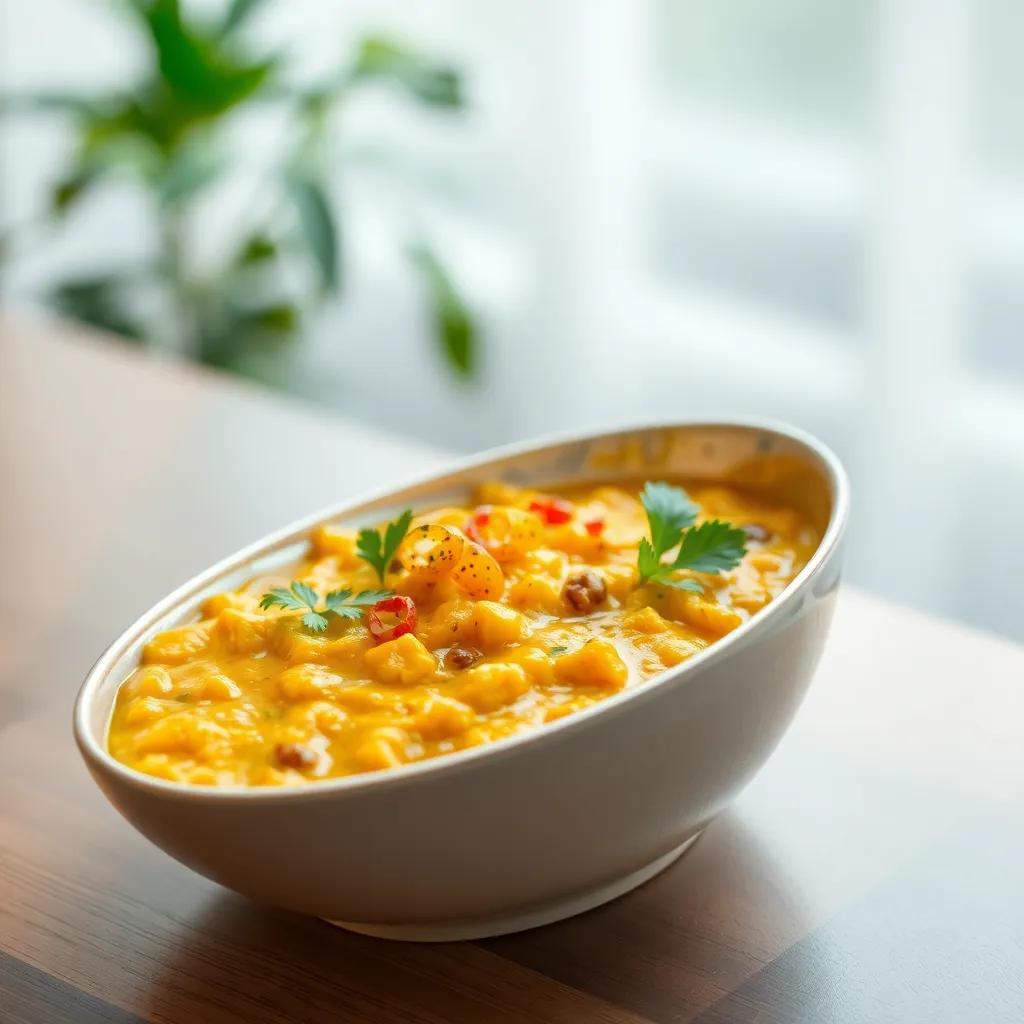
Tips & Variations
Mastering a rich and comforting Masoor Dal is as much about technique as it is about ingredients. Here are some pro-level tips and creative variations to help you customize this easy, vegan recipe to suit your taste, kitchen, and dietary needs.
First, don’t rush the tempering step where mustard and cumin seeds pop in hot oil—this sizzling release of aroma builds the foundational flavor. For a deeper, smokier edge, try using coconut oil or even mustard oil if you want a traditional touch (note: mustard oil has a stronger pungency). Sautéing onions until golden rather than just translucent adds natural sweetness that balances the tang of tomato and lemon juice beautifully.
Feel free to experiment with texture. If you prefer a chunkier dal, cook masoor lentils for less time or skip mashing. For a silkier finish, partially blending cooked dal with an immersion blender elevates the creaminess without needing coconut milk or cream. Another trick is to add a small pinch of asafoetida (hing) with the spices—it adds a subtle umami note commonly used in Indian dals but can be omitted if unavailable.
Spice-wise, the recipe is a canvas. The optional garam masala enriches warmth, but you can swap it with other blends like chaat masala for a tangy twist or add a dash of smoked paprika for mild heat. For more heat, fresh green chilies or a sprinkle of red chili powder can be added during cooking or sprinkled on top for a finishing kick.
For a gluten-free variation, rest assured this dal is naturally free of gluten. Just ensure that your broth or any store-bought spice blends don’t contain hidden gluten. If nut allergies are a concern, stick to vegetable oil or coconut oil and avoid garnishes like nuts or seeds.
To boost nutrition and add color, stir in leafy greens such as spinach, kale, or mustard greens during the last few minutes of cooking. They wilt quickly and lend a fresh bite. Another delightful variation is to incorporate diced seasonal vegetables—carrots, zucchini, or peas make excellent companions that turn the dal into a fuller one-pot meal.
If you want to add some protein variety without breaking the vegan theme, toss in cooked chickpeas or tofu cubes after the dal is cooked for extra bite and nutrition. For an herby twist, swap cilantro garnish with fresh mint or a combination of both, which brightens the dish especially on warm days.
Lastly, don’t hesitate to adjust the consistency by adding more water or simmering longer, depending on whether you like your dal soupy or thick and stew-like. Leftovers can taste even better as flavors meld, making this recipe perfect for batch cooking and weeknight dinners alike. With these tips and variations, your Masoor Dal can become a versatile staple you tailor endlessly—each pot revealing a new dimension of comfort and flavor.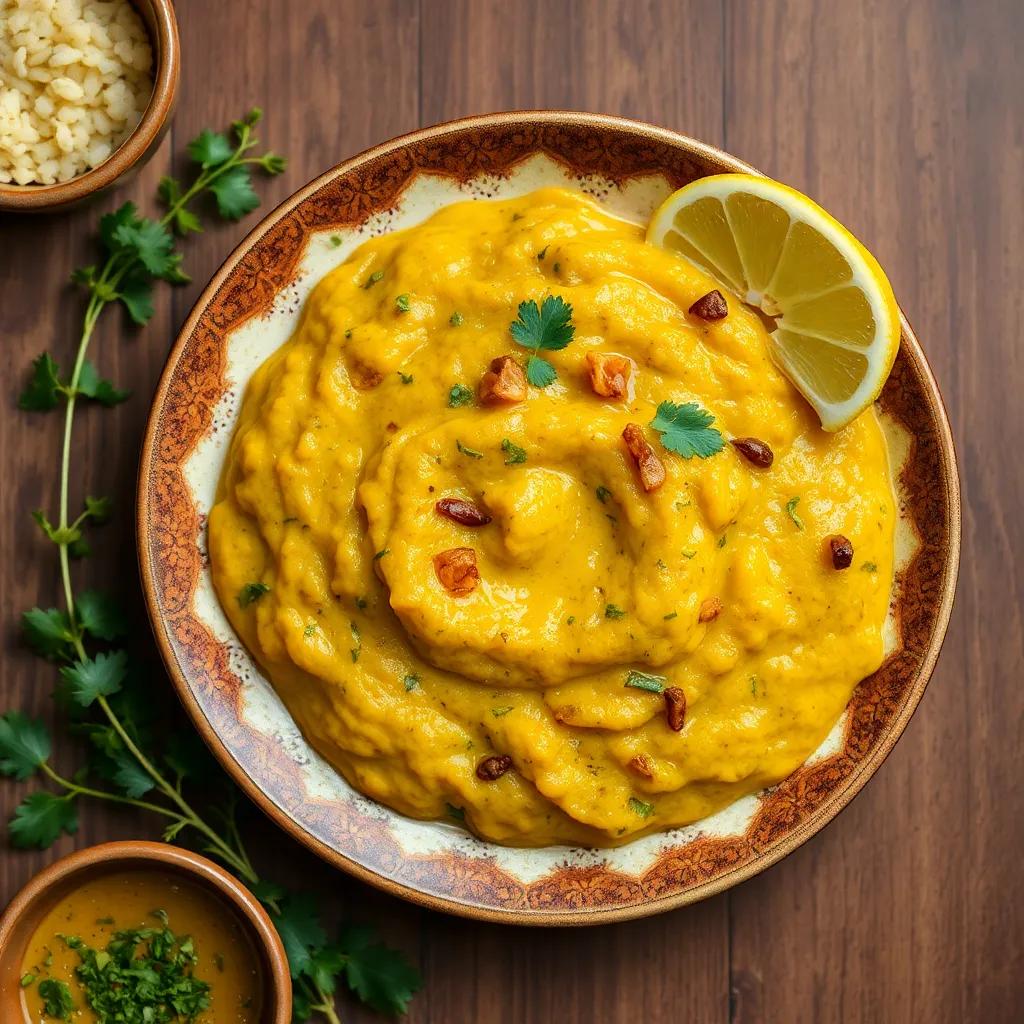
Leftovers & Storage
One of the great joys of making this easy vegan Masoor Dal is how well it holds up as leftovers, making it a smart choice for meal prepping and busy weeknights. To store your dal properly and keep its flavors fresh, follow these simple guidelines.
Allow the dal to cool to room temperature before transferring it to an airtight container. Glass containers with tight-fitting lids work wonderfully as they don’t absorb odors and are easy to reheat. Alternatively, BPA-free plastic containers also do the job well, especially if you’re short on space. Avoid leaving the dal at room temperature for longer than two hours to prevent any risk of spoilage.
When refrigerated, your Masoor Dal will stay fresh for up to 4 days. Simply reheat gently on the stovetop over low heat, stirring occasionally and adding a splash of water if it thickens too much. Microwave reheating is also fine—just cover the container loosely to retain moisture and heat evenly.
For longer-term storage, Masoor Dal freezes beautifully. Portion it into freezer-safe containers or heavy-duty resealable bags, leaving some room for expansion. Frozen dal can be kept for up to 3 months without major loss of flavor or texture. When ready to enjoy, thaw overnight in the fridge and warm on the stovetop or in the microwave. You might notice the texture separates slightly after freezing; a quick stir or light simmer will bring it back together nicely.
If you’re packing dal for lunch or a picnic, keep it chilled in an insulated container until meal time. To maintain its delightful texture, pack any accompaniments (like rice or flatbread) separately and combine just before eating.
Meal prepping with Masoor Dal is a great way to ensure you have a nourishing, protein-rich option on hand throughout the week. Consider doubling the batch and freezing individual portions, so a wholesome meal is just minutes away on hectic days. Plus, leftover dal tends to deepen in flavor after a day or two, rewarding you with even more richness when reheated.
By following these storage tips, you can savor the comforting, fragrant flavors of your Masoor Dal anytime—whether as fresh as new or as a ready-to-go meal that fits perfectly into your busy lifestyle.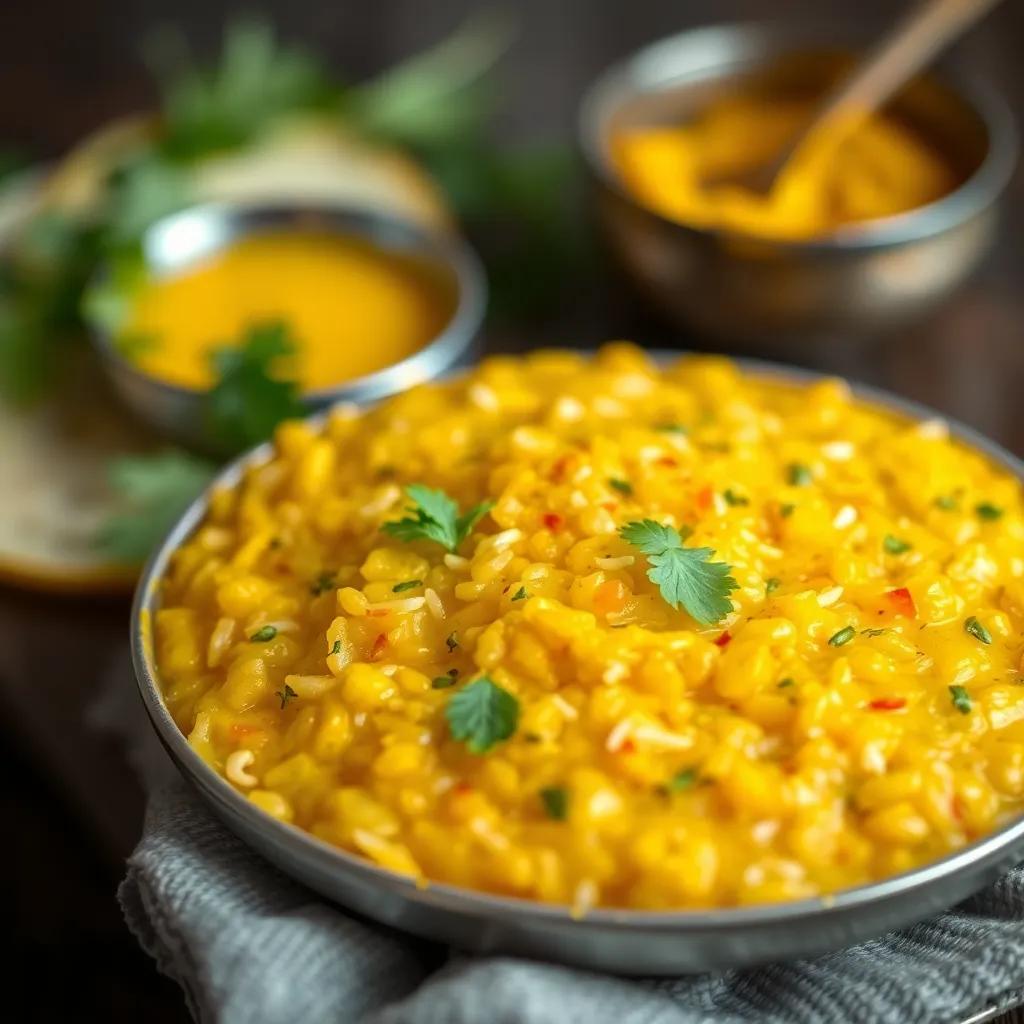
Behind the Recipe
Masoor Dal, often referred to as red lentil dal, holds a special place in the tapestry of Indian home cooking—both for its nourishing qualities and its comforting familiarity. This recipe draws inspiration from the simple, everyday dals that have been a staple on Indian dining tables for centuries, cherished not only for their hearty nutrition but for how they bring families together around a shared meal.
Historically, dals are more than just a food item; they represent sustenance, tradition, and warmth passed down through generations. Masoor Dal’s vibrant red-orange color and quick cooking time made it a favorite, especially in households where time was precious but the desire to serve wholesome, home-cooked meals never wavered. It’s common to find this dish in both humble village kitchens and bustling urban apartments, illustrating its versatility and enduring appeal.
On a personal note, this recipe emerged during my quest to simplify Indian cooking for busy weeknights without sacrificing depth of flavor. The balance of spices and aromatics mirrors the comfort I associate with meals shared on family weekends—uncomplicated yet deeply satisfying. The choice of mustard and cumin seeds to temper the oil isn’t just a cooking step but a small ritual that releases fragrant memories with every crackle and pop.
While Masoor Dal adapts beautifully to individual tastes—whether spiced up, mellowed down, or enriched with greens—the core stays true to its roots: a humble lentil transformed into a vibrant, protein-rich dish that celebrates the beauty of plant-based tradition. This recipe invites you to partake not just in making a meal, but in continuing a timeless culinary story that’s been told one bowl at a time across kitchens and cultures.
FAQ
Can I use red lentils other than Masoor Dal in this recipe?
How can I make this dal recipe even quicker without losing flavor?
What are good substitutions if I don’t have mustard seeds or asafoetida?
Can I customize the spice level to suit kids or sensitive eaters?
How should I store leftover Masoor Dal, and how long will it keep?
Is there a way to add extra protein or veggies without changing the recipe much?
Try It Yourself
There you have it—a simple, flavorful Masoor Dal that’s as quick to make as it is satisfying to eat. Whether you’re a seasoned vegan or just curious about plant-based meals, this recipe brings comforting spices and wholesome ingredients together in perfect harmony. It’s proof that cooking healthy, delicious food doesn’t have to be complicated or time-consuming.
Give this vibrant Masoor Dal a try and see how easily it can become a staple in your kitchen. And if you do, don’t forget to drop a comment below, share your favorite twists, or leave a rating to let others know how it went. We’d love to hear your stories and help spread the joy of easy, soulful cooking!

